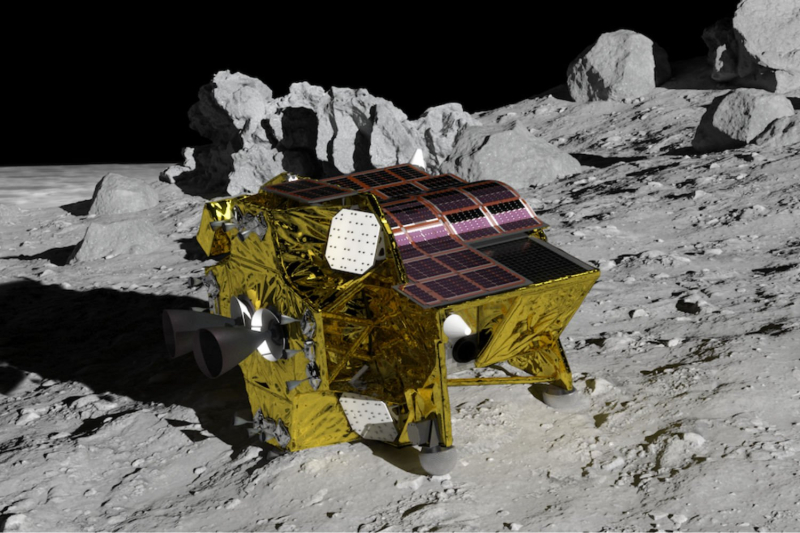
© SLIM/JAXA
SLIM could well change the history of Japanese space exploration. The 790-kilogram probe could be the first Japanese spacecraft to land on lunar soil. Landing is scheduled for this Saturday, January 20. The probe, built by the Mitsubishi company, must analyze the lunar soil for scientific purposes.
For JAXA, the Japanese space agency, this mission allows it to show itself on an international scale and to reaffirm to NASA its importance in the lunar return program to come from the American side. Scientifically, the data collected by the SLIM probe should allow us to better understand how the Moon was built.
By landing in Mare Nectaris, one of the seas on the visible side of the Moon, the probe will search for pieces of lunar rock coming from its mantle. These rocks, which are generally not visible on the surface, can rise following an impact with an asteroid.
A very different probe
For a first on the Moon, JAXA did not want to make the task easy. Instead of repeating the design of the other probes which have already reached the surface of our satellite, the state agency decided to play the innovation card, even if it meant taking greater risks.
Thus the SLIM probe is not designed like the others. In the overwhelming majority of cases, the engines used to slow down the probe during its descent towards the Moon are located in the center of the latter, between the landing gears. But for SLIM, JAXA opted for a different architecture.
Indeed, the motors are located on the sides of the probe. The Japanese space agency hopes to be able to control the descent of the probe more precisely by having a very variable thrust angle. Because if SLIM responds to major scientific challenges (the design of the Moon), it is above all a life-size demonstration of Japanese know-how.
Landing on the Moon, an achievement for all of Japan
JAXA never landed on the Moon, but the recent private mission of the ispace company demonstrates that the technical capabilities are there. All that remains is to reach the Grail and land on our satellite. But as we said above, reaching the Moon is no easy feat.
Indeed, our satellite has the unfortunate characteristic of not having an atmosphere, unlike Venus, Mars or Earth. It is therefore impossible to use parachutes to slow down. Everything must be done with motors that propel the probe in the opposite direction of descent. If the dosage of the motors is too high, the probe rises and does not land, if this same dosage is too low this time (which often happens) the probe gains too much speed during its descent and it stops. #8217;crashes on the lunar ground. This is exactly what happened to ispace's HAKUTO mission.
📍 To not miss any news from Presse-citron, follow us on Google News and WhatsApp.
[ ]

